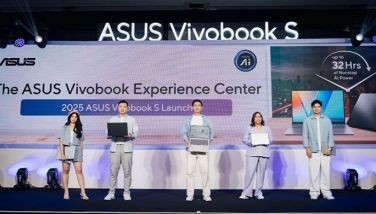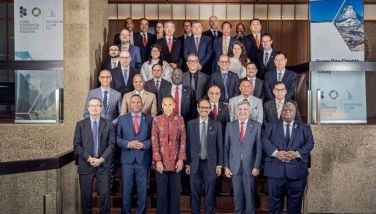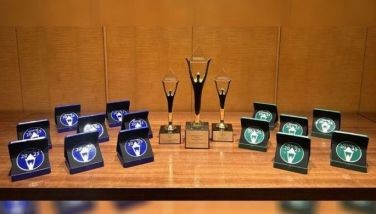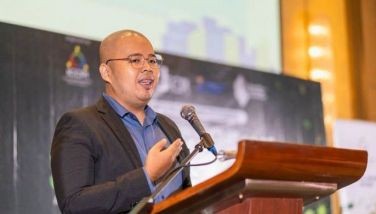Rizalizing the future

I was pulling hairs while trying to look cool. A week before the exhibit opening to mark the 150th birthday celebration of JPR (that’s Jose Rizal, our national hero), we still didn’t have a clear idea of how our exhibition was going to look like. When the curatorial team at the Yuchengco Museum sat together many months back, we knew we wanted to put up an exhibit to mark the hero’s birthday. For the museum team composed of Dannie Alvarez, Elma Abrina, Carla Martinez and myself, our challenge was to try to bring JPR closer to the youth, to a generation who doesn’t know him, presupposing that some people who enter the museum may never have met or even heard of him. It was under this direction that we set out on the treasure hunt for items, which we weren’t sure where to find, to birth a concept that would provoke and ask the young, inspire through images, allow the hero’s words to resonate with the passion of one who loves his country so that he gave his life in martyrdom. We pow-wowed and decided that we would take the ire of the scholarly community and the Rizalistas (who see Rizal as a saint) and go for the direction of making JPR hip, young and exciting. This was the only way, especially since our youth today seem to see Rizal as this nebulous fuddy-duddy historical image from textbooks.
Somehow through the years we forget, then dutifully remember his life and martyrdom during the yearly birth or death anniversaries. I personally have gotten to know Rizal more and more from my lolo’s old books, to research materials I had to pour through as I planned the exhibitions and events during our 1998’s Centennial of Philippine Independence at Expo Pilipino, and various past work I have done in Intramuros. Six years ago, when I took the job as a consulting curator at the Yuchengco Museum, there was something about JPR around every corner! This was because Ambassador Alfonso Yuchengco, patron of the museum, idolizes JPR. So inspired was he by Rizal that the hero became the symbol around which he built the Rizal Commercial Banking Corp. (or RCBC) and Malayan Insurance, all in reference to the Great Malayan. Once a diplomat for country, Yuchengco has also inaugurated Rizal shrines abroad and has supported the nationalist cause all his public life. For the museum, the 150th celebration of the hero’s birth anniversary is doubly significant as it is also the 100th anniversary of the Yuchengco Group of Companies. Today, the YGC has embraced as its corporate social responsibility, the annual cleaning and renovation of Rizal shrines around the country. In partnership with the Department of Education, the YGC is donating more than 20,000 copies of Rizal’s first novel, Noli Me Tangere, to 22 public high schools in Metro Manila, and soon in the provinces. And it continues to promulgate the values that Rizal stood for through the Buhay Rizal Campaign.
But we still had a challenge: How to set up an exhibit without a collection? We thought of making Rizal a verb. Yes a verb. To Rizal’s name, the gerund “ing” has been added on. “Rizalizing” becomes a continuous process of imbibing, becoming and carrying out the essence of Rizal. “Rizalizing the Future”... Yes, the exhibit title sounded right!
Guided by the hero’s writings, we searched through archival photos, cracked our heads for collectors we could borrow items from, called artist friends, went on Facebook and Twitter for help, and got connected to Rizal family descendants who started calling each other, letting us know which items they were willing to loan and show to the public for the first time. Suddenly, we had the family members behind us and we heaved a sigh of relief.
A week before the exhibit, as I sat alone late at night in this museum, pouring through the materials we had gathered for the exhibition, my thoughts were of how JPR had become so much a part of the Filipino’s story. It was a challenge to think of what and how would be the most effective way we could make our national hero relevant... to let his story, his mind and heart reach an audience of today through time, symbolized by faded letters, leather-bound books, pieces of memorabilia and old photographs.
Rizal’s presence in popular culture has been demystified, hero-worshipped, taken at face value, boxed up, and branded all with the informal consensus of mainstream society, allowing his presence to transform through time. Theater, dance, visual arts, graphic design, animation… our creative arts reflect a multitude of perspectives and images of this icon. Can this prevailing trend of JPR in pop culture be the Pinoy’s unconscious way of saying he or she is embracing history, connecting to the roots of values that strive for the ideal to help fulfill the promise of the race?
So present is JPR in the Filipino psyche that he is seen as inspiration in ads way back in the 1930s, brands for cement, matches, companies; theaters, sports stadiums, boats and avenues are named after him. Larger monuments and the ubiquitous school statue in every barrio or municipality also stand out in the landscape of our land. His spirit and presence seem to be everywhere, but are we really aware of him? What the exhibit does is present Rizal in his ordinariness, highlighting his disciplines and how he did very ordinary things extraordinarily well.
Opening night saw close to 50 Rizal descendants descend upon the exhibition. It was even heartening to see two people symbolic of the past come together. Rizal had as one of his best friends, Maximo Viola, who studied medicine with him in Spain. Viola helped Rizal and other propagandists work for justice and changes in the Philippine government. It was while traveling in Europe together that Viola learned that Rizal had no money to publish the Noli Me Tangere. He knew Rizal was proud, but he offered to advance the money to help Rizal print 2,000 copies of the novel in 1887. To thank him, Rizal gave him the first published copy with a dedication. That connection is remembered and given meaning by the MY RIZAL National Initiative headed by Lisa Bayot, a descendant from Rizal’s sister Saturnina line, and Maite Gallego, a direct descendant of the painter Felix Resurrection Hidalgo and Maximo Viola who aligned the MY RIZAL with the Yuchengco Museum activities.
The exhibit can boast of many firsts never before shown to the public: memorabilia owned by the hero and family descendants such as Rizal’s violin and diplomas, game sets and a bust of Josephine Bracken he made in Dapitan, love letters of Josephine, and the tampipis, which kept the original first publication copies of Noli Me Tangere safe from the Guardia Civils. Then the Kipping family, descendants of Leonor Rivera-Kipping, Rizal’s first love, loaned pieces owned by Leonor such as her jewelry, prayer book, photos of her friends, hair (yes a hairpiece), rosary, musical booklet and a special box where the ashes of JPR’s tear-drenched love letters to Leonor were kept.
The exhibit also tried new ways of cultural education dissemination: we had a Rizal-Tweetup, the first tweet-up in museum history in the country, where close to 70 bloggers and tweeters moved JPR into the social networking arena and into the new media. Information and pictures of the exhibit virally and exponentially move through a whole maze of a network on Twitter. Visual artists brought works to be exhibited, and word needed to be put out of a humorous tongue-in-cheek wooden relief of Jose and Josephine making love made by National Artist Billy Abueva, again the first time seen in public. And did you know that Rizal is even part of a video game whose storyline was made by Steven Speilberg? Well one can see this in the exhibit, too.
Even if JPR is presented in popular formats, the exhibit still attempts to bring out the spirit of his intellect and personality through his own words. The challenge in seeing the exhibit is about how each of us can cultivate our good qualities in order to make ourselves better, and build a race united, proud and strong. Amidst the storylines of the foundational strength and support Rizal’s family gave him, to his studies and travels abroad, his genius and integrity of character, and the ultimate sacrifice of his life, JPR had a constant message. He was always repeating his mantra of nationalism, love for country, and peaceful change through education and institutional reforms. He wished each of us to look at ourselves and aspire for the nobility of character. His messages were all about change and transformation. No more is this clearly shown than in his writings entitled A Century Hence, which is juxtaposed against present day current affairs of the country. And still the question begs to be asked. After more than a century where JPR envisioned a race proudly standing as a member of the family of nations, have we, the Filipino, lived up to this? On the shoulders of our youth stands part of the answer.
Events and lectures related to Rizal will be held at the Yuchengco Museum for the duration of the exhibit Rizalizing the Future, which ends on Oct. 29.
(Check www.yuchengcomuseum.org for updates or call 889-1234.)
















